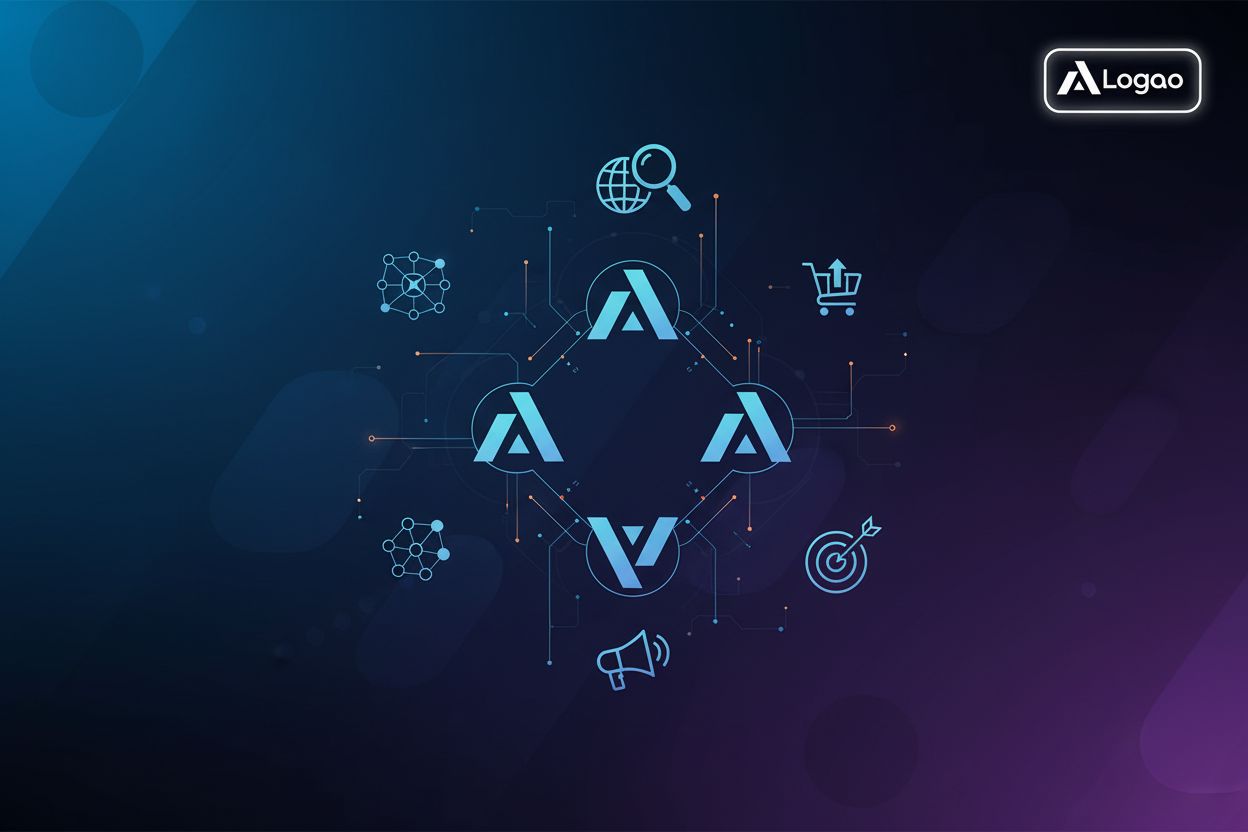A Complete Guide to Interactive Marketing with Practical Examples
TL;DR
Understanding Interactive Marketing
Interactive marketing? It's not just about slapping a quiz on your website and calling it a day, you know? It's way more involved than that.
At its core, interactive marketing is about creating a two-way street with your audience. Forget passive advertising where you just shout messages at people. This is about getting them involved. Think of it as a conversation, not a lecture. The fundamental shift is from a passive recipient of information to an active participant in the brand experience.
- It's about building experiences where customers actively engage with your brand. For example, a healthcare provider could use interactive infographics to help patients understand complex medical conditions, allowing them to click through different symptoms and treatment options. I think that's a great way to get people involved, and it makes them feel more in control of their health.
- It uses technology to facilitate real-time engagement, like personalized product recommendations based on user quizzes, or chatbots that answer customer questions instantly. The role of interactivity is to make marketing more relevant and engaging.
- Think about how retail stores could use augmented reality (ar) apps to let customers virtually "try on" clothes or "see" furniture in their homes before buying. It's not just about selling products; it's about creating a memorable experience.
Interactive marketing isn't just a trendy buzzword; it's got some serious benefits.
- Increased customer engagement and participation is a big one. People are more likely to remember a brand they actively interacted with.
- Enhanced brand recall and loyalty goes hand-in-hand with engagement. If someone has a positive, interactive experience with your brand, they're more likely to come back.
- Improved data collection and insights is another perk. Interactive campaigns can give you valuable data about your audience's preferences and behaviors.
- Better roi compared to traditional marketing? Yes, please! Interactive campaigns are often more cost-effective because they generate more engagement and leads, leading to higher conversion rates and a better overall return on your marketing spend.
- It's about driving digital transformation through engaging experiences.
It's not just about the tech; it's about understanding what makes people tick.
- Understanding user motivation and behavior is key. What do your customers want? What are their pain points? Interactive experiences should address these needs.
- The power of gamification and rewards should not be understated. People love to play games and earn rewards. Incorporating these elements into your marketing can boost engagement.
- Creating a sense of control and personalization is important. People want to feel like they're in control of their experience and that the content is tailored to their needs.
- Interactive experiences cater to different learning styles. For instance, visual learners can engage with animated infographics, while kinesthetic learners might prefer interactive simulations or games.
So, you see, interactive marketing is more than just a gimmick. It's a powerful tool that can help you engage your audience, build brand loyalty, and drive results. Now, let's delve into some practical examples of how this works in the real world...
Practical Examples of Successful Interactive Marketing Campaigns
Alright, let's dive into some real-world interactive marketing wins, because talk is cheap, right? I mean, it's cool to understand what interactive marketing is, but seeing it in action? That's where the magic happens.
Domino's has been killing it with digital innovation for years, and there AnyWare campaign? Genius. They basically let you order pizza from anywhere. Seriously.
- How'd they do it? By integrating ordering into, like, everything. Smartwatches, smart TVs, even your car (if you're lucky enough to have one with the right tech). You could even tweet a pizza emoji at them! Now that's what i call convenience.
- The impact? Sales went up, obviously, but more importantly, they became the pizza place associated with tech and convenience. It wasn't just about the pizza; it was about the experience.
- It showed that interactive marketing isn't just about flashy graphics. It's about making your product more accessible and seamlessly integrating it into people's lives. It's not just about being cool, it's about being useful.
Remember Bandersnatch? That interactive episode of Black Mirror where you got to decide what the main character did? Yeah, that was next-level.
- It was all about branching narratives, where your choices affected the story. Did you pick Sugar Puffs or Frosties? That could change the plot progression, even if it was a minor detail.
- The genius of it was how it engaged viewers. You weren't just watching a show; you were participating in it. You were kinda the director, in a way.
- The buzz was insane. Everyone was talking about it, sharing their different paths, and comparing endings. It proved that interactive storytelling could be a major game-changer. I wonder if they will produce more like that?
Old Spice has always been known for their quirky ads, but they took it to another level with their personalized video responses. Remember that?
- They had Isaiah Mustafa, "The Man Your Man Could Smell Like," respond to fans' tweets and comments with short, custom videos. It was hilarious and totally unexpected.
- It went viral, obviously. People were sharing these videos like crazy. It felt like you were getting a personal shout-out from a celebrity, even if it was just for a few seconds.
- The impact on brand awareness was huge. It showed that being responsive and engaging on social media can pay off big time. It's not enough to just post; you gotta interact!
So, you see how these companies didn't just throw some interactive elements into their marketing? They built entire experiences around them. It's not about the gimmick; it's about the engagement. Now, we'll look at some real-world examples of these techniques in action...
Types of Interactive Marketing Techniques
Interactive marketing isn't just one thing, it's a whole bunch of different techniques – kinda like having a Swiss Army knife for your marketing strategy. Each tool serves a different purpose, and when used right, they can seriously boost engagement.
Okay, so quizzes might seem a little basic, but hear me out. They're super versatile.
- Personality quizzes are great for brand awareness. Ever seen those "What kind of coffee are you?" quizzes? They're fun, shareable, and can subtly introduce your brand's personality.
- Knowledge tests position you as an expert. A financial services company could offer a "How financially literate are you?" quiz, providing value while also identifying potential leads.
- Product recommendation quizzes are sales gold. A skincare brand could ask about skin type, concerns, and preferences, then recommend the perfect products.
- Don't forget, quizzes are lead magnets. Require an email address to get the results, and boom, you've got a new lead.
- And it's not just about the quiz itself; it's about the personalized feedback. Give people actionable insights based on their scores.
Polls and surveys? They're like having a direct line to your audience's thoughts.
- Real-time polls are awesome for instant feedback. Use them during webinars or live events to gauge audience opinions and adjust your content on the fly.
- Surveys are for deeper dives. Send out a customer satisfaction survey after a purchase to understand what you're doing right and wrong.
- Social media polls are a no-brainer. Ask your followers what kind of content they want to see, or what products they're interested in.
- And it's not just about collecting data; it's about acting on it. Use survey results to improve your products, services, and overall customer experience.
- Think about how you can integrate polls into social media stories for quick, engaging interactions.
Who doesn't love free stuff? Contests and giveaways can generate serious buzz.
- Social media contests are classic for a reason. Ask people to like, share, and tag friends to enter for a chance to win a prize.
- Sweepstakes are simple and effective. Just ask people to enter their email address for a chance to win.
- User-generated content (ugc) contests are gold. Encourage customers to share photos or videos of themselves using your product, and reward the best entries.
- Gamified contests can boost participation. Create a challenge with points, badges, and leaderboards to keep people engaged.
- Just remember the legal stuff! Make sure you're following all the rules and regulations for contests and giveaways in your area, like terms and conditions, age restrictions, and geographic limitations.
Videos that talk back? Okay, maybe not literally, but you get the idea.
- Branching narratives let viewers choose their own adventure. A training video could let viewers choose different scenarios and see the consequences of their choices.
- 360-degree videos are immersive and engaging. A real estate company could offer a virtual tour of a property, letting viewers explore every corner.
- Interactive product demos let customers try before they buy. An automotive company could let viewers customize a car and see it from different angles.
- Quizzes and polls in videos? Yes, please! Embed questions throughout the video to test viewers' knowledge and keep them engaged.
- And don't forget to track engagement! See how long people are watching, where they're clicking, and what questions they're answering.
Infographics don't have to be static. Liven them up with interactivity!
- Animated data visualizations make complex information easier to understand. A healthcare provider could use an animated infographic to explain how a vaccine works.
- Clickable hotspots let viewers explore different aspects of the infographic in more detail. A city planning department could use an interactive map to show different development projects.
- Interactive storytelling with data is powerful. Guide viewers through a narrative, revealing data points as they scroll and click.
Give your audience tools they can actually use.
- ROI calculators are great for b2b companies. Let potential customers calculate the potential return on investment of your product or service.
- Product configurators let customers create their perfect product. A furniture company could let customers design their own sofa, choosing the fabric, legs, and cushions.
- Financial calculators help people make informed decisions. A mortgage lender could offer a calculator to help people estimate their monthly payments.
Interactive marketing is all about creating experiences, not just campaigns. Up next, we'll explore how to measure the success of your interactive efforts.
Planning Your Interactive Marketing Strategy
Alright, so you're ready to jump into interactive marketing? Awesome! But hold on a sec, before you start throwing quizzes and polls at your audience, you need a plan. Think of it like baking a cake – you wouldn't just chuck ingredients together and hope for the best, right?
First things first, what are you hoping to achieve? Are you looking to generate more leads, boost brand awareness, or just get people more engaged with your content? You gotta nail this down.
- Setting measurable goals is super important. Don't just say "increase engagement." Instead, aim for something like "increase quiz completion rate by 20% in the next quarter." Numbers help you track progress and see what's working (and what's not).
- Make sure your interactive marketing efforts are aligned with your overall business strategy. It shouldn't be some random side project. It needs to support your bigger goals. For example, if you're a financial services company trying to reach younger investors, an interactive investment quiz could be a great way to do that.
Who are you trying to reach, anyway? You can't create effective interactive experiences if you don't know who you're talking to.
- Really understand your audience's preferences and behaviors. What kind of content do they enjoy? What platforms do they use? What are their pain points? A Gen Z audience might love a TikTok-style interactive challenge, while an older demographic might prefer a more in-depth survey.
- Segmenting your audience is key for personalization. You wouldn't send the same interactive experience to a new customer as you would to a loyal one, right? Tailor your content to different groups based on their demographics, interests, and past interactions.
- Choosing the right interactive formats for your audience is also something to consider. A B2B software company might use an roi calculator to generate leads, while a clothing retailer might use a product recommendation quiz to drive sales. It's all about finding the right fit.
Okay, you know who you're talking to and what you want to achieve. Now, where are you going to do it?
- Social media platforms are a no-brainer for interactive content. Facebook, Instagram, Twitter – they all offer different ways to engage your audience. Instagram Stories are great for polls and quizzes, while Facebook is good for hosting contests and giveaways.
- Don't forget about email marketing platforms. You can use interactive elements like polls and quizzes in your emails to boost engagement and gather feedback. Plus, it's a great way to personalize your messaging.
- Your website is prime real estate for interactive experiences. Embed quizzes, calculators, and configurators directly on your site to keep visitors engaged and provide value.
- There’s also a ton of interactive marketing software and tools out there that can help you create and manage your campaigns. Think quiz builders like Typeform or SurveyMonkey, chatbot platforms like Intercom, or even more advanced tools for AR/VR development. Do some digging and find what works best for your needs and budget.
This is where the magic happens. It's time to bring your ideas to life!
- Brainstorm creative ideas that will capture your audience's attention. Think outside the box and don't be afraid to experiment. What kind of interactive experiences would genuinely excite and engage your target audience?
- Develop engaging narratives that draw people in. Storytelling is a powerful tool for interactive marketing. Create experiences that take your audience on a journey and make them feel like they're part of the story.
- Design visually appealing experiences that are easy to use and navigate. First impressions matter, so make sure your interactive content looks good and functions smoothly.
- Ensure mobile-friendliness and accessibility. Most people will be accessing your interactive content on their phones, so make sure it's optimized for mobile devices. And don't forget about accessibility – make sure your content is usable by people with disabilities.
Planning your interactive marketing strategy might seem like a lot of work, but it's worth it. By taking the time to define your goals, identify your audience, choose the right platforms, and create compelling content, you'll be well on your way to creating engaging experiences that drive results. Now, let's discuss how to implement and measure your interactive marketing campaigns...
Implementing and Measuring Your Interactive Marketing Campaigns
Alright, so you've launched your interactive campaign – high five! But, uh, how do you know if it's actually, you know, working? Turns out, just crossing your fingers isn't a super effective strategy.
First things first, promote that thing! Don't just build it and expect people to magically find it. I mean, you can, but likely it won't work.
- Leverage your existing channels: Tell your email list, plaster it all over your social media, and even sneak it into your next blog post. Think of it as planting seeds – the more places you sow, the more likely you are to see some growth. A retailer, for example, might promote and interactive "find your style" quiz on instagram, in their email newsletter, and on their website's homepage.
- Paid advertising can give you a boost, especially if you're trying to reach a new audience. Think targeted ads on social media or Google Ads. It's like putting a spotlight on your content – making sure the right people see it.
- Integrate with your other marketing efforts. Don't let your interactive campaign exist in isolation. Make sure it complements your other marketing activities, creating a cohesive experience for your audience. A financial services firm might use an interactive retirement calculator as a lead magnet in their content marketing strategy.
So, how do you know if your campaign is a hit or a miss? Time to dive into the data.
- Track key metrics: Engagement rate (how many people are actually interacting?), completion rate (are people finishing your quiz or survey?), and lead generation (are you getting those valuable contact details?). These are your bread and butter.
- Analytics tools are your friend. Google Analytics, social media analytics, and dedicated interactive marketing platforms can give you a wealth of data about your campaign's performance. Use them!
- a/b testing is something that you should do. It's crucial for optimizing your interactive campaigns. Try different versions of your interactive content – like varying headlines, calls to action, question order, or visual elements – to see what resonates best with your audience and drives the most engagement.
Don't just set it and forget it. The beauty of digital marketing is that you can always improve.
- Analyze your data to identify areas for improvement. Where are people dropping off? What questions are they struggling with? Use this information to refine your content and make it more engaging.
- Adapt to changing user behavior. What worked last year might not work this year. Stay on top of trends and adjust your strategy accordingly.
- Future-proof your efforts by building flexible and scalable interactive experiences. Technology is constantly evolving, so make sure your campaigns can adapt to the changing landscape.
Interactive marketing is an ongoing process, not a one-time event. Keep experimenting, keep learning, and keep engaging your audience in new and exciting ways and you will be good to go.




